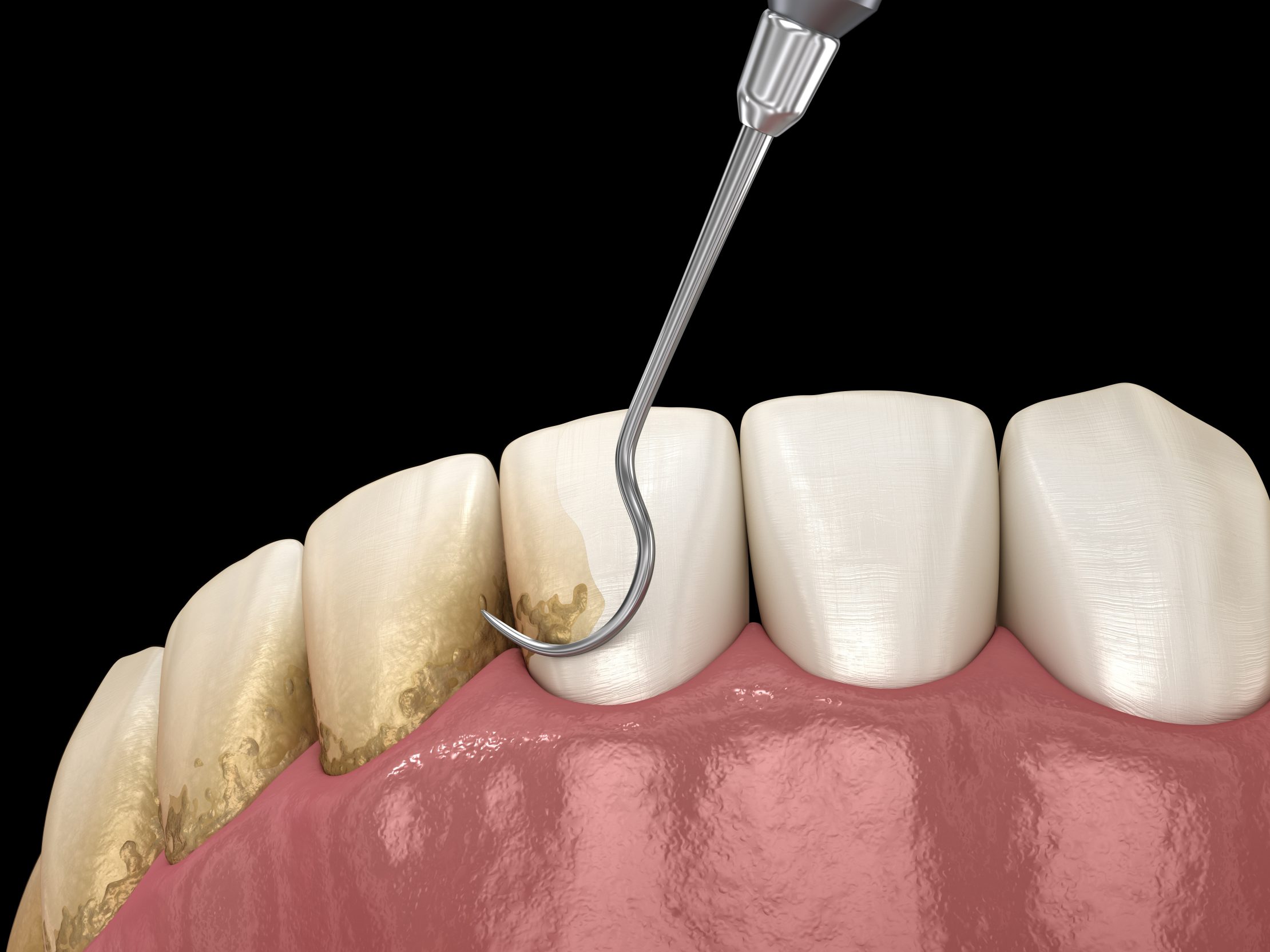When it comes to protecting your oral health, routine cleanings and good daily habits often do the job. But when gum disease begins to take hold below the gum line, a deeper level of care may be needed.
If you’ve noticed signs like bleeding gums, bad breath, or gum recession, this treatment may be the first step toward healthier gums and a stronger smile. That’s where scaling and root planing come in
What Is Scaling and Root Planing?
Scaling and root planing is a deep cleaning procedure used to treat early to moderate periodontal disease (gum disease). It targets harmful buildup both above and below the gumline to help restore the health of your teeth, gums, and supporting bone.
This treatment is often recommended when periodontal pockets, the spaces between your teeth and gums, become too deep for regular brushing, flossing, or standard cleanings to reach effectively.
The Two-Part Process
- Scaling involves gently removing plaque, calculus (hardened plaque, also known as dental tartar), and bacteria from the tooth surfaces – especially around and below the gumline.
- Root planing smooths out the roots of the teeth to discourage future bacterial buildup and help your gums reattach to the clean tooth structure.
This approach not only slows the progression of gum disease but can prevent more serious complications, such as bone loss or tooth loss, later on.
When Is Scaling and Root Planing Recommended?
Scaling and root planing is typically the initial treatment for patients with gingivitis or chronic periodontitis. It may be recommended if:
- You have bleeding, swollen, or tender gum areas
- Deep periodontal pockets are present (usually 4mm or deeper)
- X-rays show bone loss around the teeth
- There’s visible buildup of calculus below the gumline
- You experience persistent bad breath or a bad taste in your mouth
- Your gums appear to be pulling away from your teeth (gum recession)
During your visit to Gradeless Dental, our team will measure your pocket depth and evaluate your symptoms before determining if this treatment is necessary.
What to Expect During the Procedure
At Gradeless Dental, every step of the procedure is guided by your comfort. Our experienced hygienists and dental team will walk you through the process and answer your questions along the way.
Here’s what typically happens:
1. Local Anesthesia for Comfort
To minimize any discomfort, we’ll use local anesthesia to numb the treatment area. You may feel pressure during the cleaning, but the numbing ensures that the procedure is not painful.
2. Scaling Below the Gumline
Using specialized tools like hand scalers, ultrasonic instruments, or both, we’ll remove plaque, calculus, and bacteria from the roots of your teeth and beneath the gum tissue.
3. Root Planing for Healing
Next, we’ll smooth out the root surfaces to help reduce inflammation and allow the gum tissue to begin healing. This also helps shrink the size of the pockets around your teeth.
4. Post-Treatment Care
You may experience some soreness, swelling, or minor bleeding afterward, this is normal and should subside within a few days. Over-the-counter pain relievers and warm saltwater rinses often help ease symptoms. We may also recommend antimicrobial agents or antibiotics to support healing and reduce bacterial growth.
How Scaling and Root Planing Protects Your Oral Health
The benefits of scaling and root planing extend well beyond the cleaning itself.
Here’s how this treatment supports your overall oral wellness:
- Stops Gum Disease From Progressing: Deep cleaning helps control the infection and reduces pocket depth to make daily cleaning easier.
- Prevents Tooth and Bone Loss: Removing bacteria and buildup helps protect the structures that support your teeth.
- Supports Long-Term Oral Health: With consistent oral hygiene practices like regular brushing, flossing, and routine checkups, this treatment can significantly improve periodontal health.
- Promotes Gum Reattachment: Clean root surfaces make it easier for your gums to heal and reattach to the tooth, reducing future risk of infection.
Scaling and root planing is backed by numerous systematic reviews and is supported by both the American Dental Association and global dental organizations, including the Canadian Agency for Drugs and Technologies in Health, as an effective early intervention for gum disease.
Will I Need Additional Treatment?
In many cases, scaling and root planing alone is enough to restore healthy gums, especially when paired with excellent at-home care. However, if periodontitis continues to progress or deep pockets remain after healing, additional periodontal therapies or surgical options may be considered.
Our team at Gradeless Dental will continue to monitor your gumline, pocket depth, and overall recovery during follow-up visits. Every decision will be made with your comfort and long-term health in mind.
Preventing Gum Disease Starts with Good Daily Habits
Even after successful treatment, gum disease can return if plaque is allowed to build up again. That’s why we place such a strong emphasis on prevention:
- Brush twice a day with fluoride toothpaste
- Floss daily to clean between teeth
- Schedule regular dental cleanings and checkups
- Avoid tobacco use
- Eat a balanced diet that supports overall oral health
By staying consistent with your care routine, you can protect the results of your treatment and keep your gums healthy for the long haul.
Personalized Care for a Lifetime of Healthy Smiles
If you’re noticing changes in your gum health, such as bleeding, receding gums, or ongoing discomfort, don’t wait. Contact us today!








